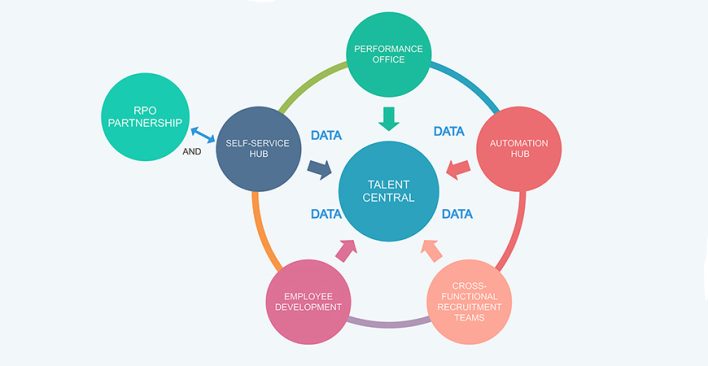Transforming Recruitment Marketing – Part 1

This is the first in a five-part blog series on how to transform recruitment marketing to ensure it creates impact and value for your organisation.
The heart of Talent management is in the ability to see, identify, attract and engage the right Talent to propel a company and organisation to success.
The challenge is that Talent and work are both dynamic. The person who sent in their resume to a company’s ATS 6 months ago, has grown new skills, evolved new capabilities and had new experiences. The needs of the company have also evolved and changed. They may have not seen that candidate as the right fit before, but now that discarded candidate could be the Talent that the company needs to create the impact it desires.
Problem is traditional recruitment marketing has focused on the attraction part of the scenario and not done a good job of keeping insight and connection to Talent fresh and relevant. That perfect talent fit is invisible to the company’s recruiters and has long lost interest in the company itself, because recruitment marketing has not done an adequate job managing the candidate relationship and keeping the data about them fresh.
I believe this dynamic can change by rethinking the purpose and role of recruitment marketing. It is time for a global transformation in the recruitment marketing model to one focused on understanding the connection between making great matches of people to jobs and the purposeful collection of insight and data through relationships that evolve over time.
Recruitment marketing that supports Talent Acquisition effectively is centred around data and requires the following four elements – a comprehensive mapping of Talent Acquisition decisions that require candidate data, a clear understanding of what candidates would see as valuable to receive in exchange for sharing data about themselves, a technology infrastructure that allows the recruitment marketing team to collect, organise, connect and analyse candidate data, and finally a purposeful engagement plan that goes beyond candidate attraction and keeping candidates warm and instead focuses on maintaining candidate engagement and refreshing candidate data.
Over the course of my next four blogs, I am going to outline the key components of these elements that I think recruitment marketing should be focused on delivering in order to meet the candidate insight challenge ahead of us.
1) Data Decision Mapping
- What decisions do your Talent Acquisition teams make about candidates?
- When are those decisions made in the recruiting lifecycle?
- What information is needed to make the decisions?
- How often does the candidate data need to be refreshed to make sure it is relevant?
2) Target Audience Value Alignment
- Audience segmentation = How should you be segmenting audiences to ensure you can engage them purposefully?
- Audience journey maps = looking past the transaction of job hunting
- Audience mental models = discovering the why behind candidate actions and behaviours
3) The Candidate Data Infrastructure: Collect, Organise, Connect and Analyse Candidate Data
- Collect = an interaction layer + a parsing layer
- Organise = a scalable database or better yet data lake + a candidate data architecture
- Connect = an artificial intelligence engine + data system integrations + data usage models
- Analyse = business intelligence tool + predictive modeling
4) Purposeful Engagement Planning
- Interaction strategy = when to personalise + what to automate + who engages candidates
- Prioritisation strategy = which audience segments do you care about most + how do you know if a candidate matches that segment + how to manage your interactions at scale
- Collateral = what is your message + how do you deliver it + what’s the call to action
- Assessment = how do you screen throughout the relationship + how do you augment your insights + how do you validate what candidates tell you
This is part 1 of a five-part blog series. Click here for part 2: Candidate Data Maps.
Cover image: Shutterstock
This article first appeared on LinkedIn on 30 December 2020.
Related articles
Leave a Reply
Sign up to our newsletter
Get a weekly digest on the latest in Talent Acquisition.
Deliver this goodness to my inbox!


